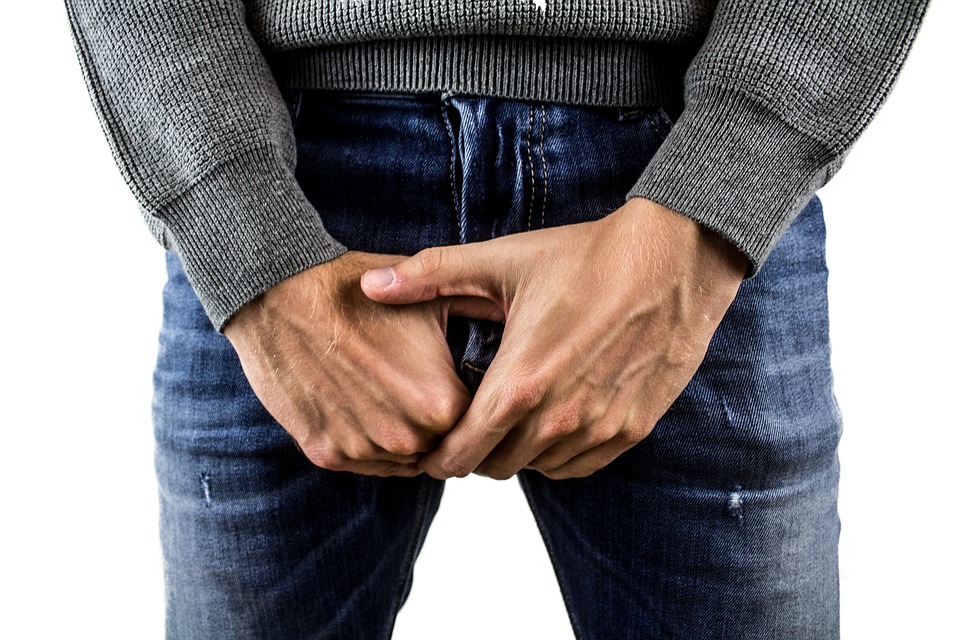Peyronie’s disease is a problem that affects some men.
It is unclear what effect this might have on males.
It is understood that this condition can cause soreness in the penis, bending of the penis, as well as other potential difficulties for men who are affected.
In this article, let’s examine the unusual bending to comprehend what Peyronie’s disorder is.
It is important for men to be aware of the existing treatments and signs of Peyronie’s disease.
How Erections Work
The penis is a central part of the male reproductive system, and it is responsible for the excretion of wastes in the form of urine.
When a male becomes stimulated, blood begins to flow into two separate chambers in the male organ. This results in an erection.
When functioning properly, the penis typically becomes rigid when erect. Although it is not always the case, certain conditions may cause difficulties with both achieving an erection and changing the shape of the penis when erect.
What Is Peyronie’s Disease?
Peyronie’s ailment is a condition in which a patch of scar tissue, called a plaque, builds up underneath the skin of the male reproductive organ, which is employed for urination and sexual intercourse.
A buildup of plaque occurs inside the penis in the tough, flexible membrane known as the tunica albuginea. The tunica albuginea helps maintain rigidity of the penis while it is erect. The plaque can develop anywhere along the penis.
As the condition progresses, the buildup of the plaque tugs on the nearby tissues, resulting in a curvature or bending of the penis, usually while erect. Bends in the male organ can cause erections to be excruciating and can result in painful, challenging, or unachievable sexual acts.
The plaque that develops in Peyronie’s disease:
- Is caused by injury to your penis or by an autoimmune disease.
- Is not the same plaque that can develop in a person’s arteries.
- Is benign—not cancerous and not a tumor.
Peyronie’s disease occurs in two phases.
Acute phase
During the period when it first appears, the plaque builds up, and it may take up to 18 months for this stage to complete. During this phase:
- Inflammation may occur, and plaque forms on your penis.
- Your penis starts to curve.
- Your penis may hurt without an erection.
- Erections may become painful when scars develop.
Chronic phase
The chronic phase occurs after the plaque has formed. Generally, the long-term period begins between 12 and 18 months after one experiences the first symptoms. During this phase:
- Plaque and penile curvature may stabilize and not get worse.
- The pain in your penis may lessen.
- Erectile dysfunction (ED) may develop or become worse.
How Common Is Peyronie’s Disease?
Around one percent of adult males in the United States have been identified as having Peyronie’s disease. Based on studies done on men displaying signs of Peyronie’s disease, it has been estimated that the true number of those suffering from it is over 1 in 10.
The chance of developing Peyronie’s disease increases with age. It is not as frequent for males in their twenties and thirties to be diagnosed with Peyronie’s disease.
Who Is More Likely to Have Peyronie’s Disease?
You may be at higher risk of developing Peyronie’s disease if you:
- engage in vigorous sexual or nonsexual activities that cause micro-injuries to the penis
- have certain connective tissue NIH external link and autoimmune disorders
- have a family history of Peyronie’s disease
- are older
- have diabetes and erectile dysfunction
- have a history of prostate cancer treatment with surgery
Vigorous Sexual and Nonsexual Activities
Individuals who engage in activities that lead to minor harm to the penis are more likely to have Peyronie’s disease; this would include physical activities (like sports) and sexual activities.
Connective Tissue and Autoimmune Disorders
Someone with particular conditions involving connective tissue or autoimmune problems could be at a heightened risk for getting Peyronie’s disease.
- Connective tissue is specialized tissue that supports, joins, or separates different types of tissues and organs in your body. Connective tissue disorders may affect your joints, muscles, and skin. Some disorders associated with Peyronie’s disease include:
- Dupuytren’s disease also known as Dupuytren’s contracture. In this condition, the connective tissue in the palms of the hands shortens and thickens. This results in the permanent bending of the outer fingers. It is not clear why men with Peyronie’s disease are more likely to develop Dupuytren’s disease.
- Plantar fasciitis, which is inflammation of the thick tissue on the bottom of the foot that creates the arch of the foot.
- Scleroderma, which is the abnormal growth of thick, hard patches of connective tissue. Scleroderma can also cause swelling or pain in muscles and joints.
The body’s immune system mistakenly targets and harms its own cells and organs in autoimmune disorders. Autoimmune disorders associated with Peyronie’s disease include:
- Systemic lupus erythematosus, which causes inflammation and damage to various body tissues, including the joints, skin, kidneys, heart, lungs, blood vessels, and brain
- Sjögren’s syndrome, which causes inflammation and damage to the glands that make tears and saliva
- Behçet’s disease, which causes inflammation of the blood vessels
Family History of Peyronie’s Disease
Some medical professionals suggest that Peyronie’s disease could possibly be inherited within certain families. If Peyronie’s disease runs in your family, such as having a dad or brother who are diagnosed with it, you may be more prone to getting it as well.
Aging
Your chance of getting Peyronie’s disease increases with age. As someone ages, the tissues in the penis may become more susceptible to damage and more difficult to repair.
Diabetes with Erectile Dysfunction
Individuals with ED related to diabetes are four to five times more likely to develop Peyronie’s illness when compared to the general public.
Prostate Cancer Treatment with Surgery
The risk of contracting Peyronie’s disease increases post-surgical treatment for prostate cancer. Medical specialists think that erectile dysfunction caused by a surgical procedure for prostate cancer is likely the cause of this issue.
What Are the Complications of Peyronie’s Disease?
Complications of Peyronie’s disease may include:
- The inability to have sexual intercourse due to penile curvature
- ED
- emotional distress, depression, or anxiety about sexual abilities or the appearance of the penis
- stress in a relationship with a sexual partner
- problems fathering a child because intercourse is difficult
What Are the Signs and Symptoms of Peyronie’s Disease?
The signs and symptoms of Peyronie’s disease may include:
- hard lumps on one or more sides of the penis
- pain during sexual intercourse or during an erection
- a curve in the penis with or without an erection
- changes in the shape of the penis, such as narrowing or shortening
- ED
These conditions can either have a gradual progression or show up unexpectedly, and they can vary in intensity. Many times, the pain will lessen as time passes; nevertheless, the bend in the penis may remain unchanged. Issues with sexual activity or erectile dysfunction can develop during either stage.
What Causes Peyronie’s Disease?
Medical experts do not know the exact cause of Peyronie’s disease but believe that it may be the result of:
- acute or chronic injury to the penis
- autoimmune disease
Peyronie’s disease is not spread from person to person, and there is no known infection that can cause it.
Injury to the Penis
Medical professionals opine that impacting or twisting the penis could damage the tissues inside of it. Injuries can be sustained during sexual activity, athletics, or because of an accident. One single incident of damage can take place, termed as a sharp injury, or damage can happen gradually over time, referred to as a long-term injury.
There could be bleeding and inflammation inside the flexible sheath of the penis, known as the tunica albuginea, from the hurt. Once the wound has recovered, it may cause scarring, and a hardened lump may emerge. The solidified plaque tugs at the tissue in the area and leads to a bending of the penis.
You may not notice small injuries to your penis when they happen. Investigators have discovered that a great many people encountering a medical issue have difficulty recollecting a particular event that occurred just prior to the start of their symptoms.
Autoimmune Disease
Individuals with an autoimmune illness can create Peyronie’s infection if the safe framework assaults cells in the penis. This can lead to inflammation in the penis. Scar tissue may form and develop into plaque. For additional information on autoimmune diseases related to Peyronie’s sickness, see the sections on connective tissues and autoimmune issues.
Can The Disease Affect the Hands?
Yes. Countless people with the disease also develop Dupuytren’s contracture. This is a medical condition that causes tough material to develop on the palm of the hand. The tightening of the tissue causes the fingers to become curved, similar to how the illness affects the penis.
When To See a Doctor
Men who present with indications indicative of Peyronie’s disorder – particularly the bent shape of the penis while in an erect state – should seek the advice of a physician. Especially when they feel pain. The main worry is the issues with the tissues that the disease brings about.
If therapy is begun at the initial stages, it is more likely that the formation of problematic scar tissue which causes the penis to bend when erect can be prevented. It is recommended to get a medical check-up to be sure that everything is okay.
At times, your doctor may suggest that watching the state of the tissue is the optimal action for the present moment – even in these scenarios, it is still important to get input from a medical specialist.
Treatment Options for Peyronie’s Disease
The goal of managing Peyronie’s disease is to alleviate the pain, attempt to achieve a more normal form for the penis, and work to restore the capacity for intimate relations. In less severe situations, the physician may suggest not using surgery.
In most cases, the physician will have the individual observing their bend and utilizing pain relief medication if required.
A commonly used course of action given to patients is a contamination with the bacteria collagenase clostridium histolyticum. Should the curvature be quite serious, you will require medical procedures.
This is what treatment for Peyronie’s disease looks like when viewed from each of these two approaches.
Non-Surgical Approach
When the disease is in the acute phase, those affected can receive:
Oral medications
Potassium para-aminobenzoate has the potential to shrink the lump created by Peyronie’s disease, but it won’t change the degree of curvature. Medications can be taken alongside non-steroidal anti-inflammatory drugs (NSAIDs) to reduce the pain.
Injections
This medication requires a medical professional to inject it directly into the plaque and cannot be performed without medical care. Injectable options like intralesional verapamil, interferon, and collagenase are available.
Medical therapy
Additional therapies are still being evaluated. Some of the treatments for spinal conditions include shockwave therapy, vacuum traction, and mechanical traction devices. The first objective is to reduce plaque and discomfort, while the latter aims to control the bending.
Surgical Approach
When the symptoms of the tissue don’t disappear and intercourse is seriously affected by the curve, surgery has to be done. The doctor will examine the condition of your erection and the tissue surrounding it to work out which surgical approach is the most appropriate for your case, and advise you of the most effective remedy.
You can have:
Plication
A urologist may utilize Plication to get rid of a very small piece of the covering in order to make the organ more straight. The probability of encountering ED or numbness due to the operation is minuscule.
Penile implant
A penile prosthesis can help to bring back normal erections and make the penis appear straight. When the desired outcome is not achieved with a penile implant alone, the physician will opt to carry out additional operations in addition to the implant.
Grafting
Grafting is a type of surgery aimed at removing plaque and replacing it with tissue from another part of the body or from a donor organ. It is quite common for people to experience numbness and erectile dysfunction (ED) right after undergoing treatment.
Nevertheless, the issues each individual experiences will be different. That’s why many require monitoring post-procedure.
Can Penile Traction Therapy Be Used for Treatment?
Traction therapy might seem like a possible treatment option. The amount of research devoted to this treatment is quite small. Experts claim that using traction therapy to reduce the curvature and extend the size of the penis in those in the early stages of the condition had only a modest success rate. It is necessary to carry out further extensive research to see if this can make a considerable difference.
What Are Natural Treatments for Peyronie’s Disease?
Some natural remedies can help treat Peyronie’s disease.
Presently, Acetyl-L-Carnitine is being highly recommended as one of the foremost natural remedies for the illness.
In a single investigation, investigators discovered that this therapy had similar outcomes as the pharmaceutical tamoxifen, commonly utilized to address Peyronie’s illness if it is still in its beginning stages. Acetyl-L-Carnitine had a stronger ability to bring back the action of the penis and had a considerably more favorable impact on its safety.
A separate research study suggested that supplements, including coenzyme Q10 might be able to help a man with Peyronie’s disease better his sexual performance.
What Is the Best Treatment for Peyronie’s Disease?
Injections of the medication Collagenase clostridium histolyticum directly into the penis can provide a significant improvement for people with Peyronie’s disease using a drug-based method.
Presently, the FDA has given its approval to this drug alone to cure the affliction. It is crucial to be aware that the patient must fulfill certain conditions prior to receiving this medication.
At times, physicians may administer interferon injections to help dissolve the fibrous tissue that appears in the patient’s penis. Some physicians may also order Verapamil, an oral medication used to treat high blood pressure.
Drugs may assist males suffering from more severe incidences of Peyronie’s malady, yet there isn’t enough evidence from research to determine if they are successful and how they may work. This individual may be recommended to take the following medications in addition to verapamil: orally administered vitamin E, colchicine, tamoxifen, and Potaba (potassium amino-benzoate).
If regular treatment methods fail to produce satisfactory results, a physician may recommend surgery as an alternative. There are various surgical techniques we can use to help bring back erectile functioning and minimize the curvature associated with Peyronie’s disease in the penis.
Conclusion
This illness can be quite distressing and disabling.
In some cases, the condition can clear up without the need for any special treatment. Yet, for many individuals, it is necessary to take action in order to maintain the condition.
In particularly intense circumstances, an operation may be the best possible choice. The type of care you get is determined by the severity of your illness.
Speak to a specialist to guarantee you are able to effectively deal with the issue and the signals of peyronie’s illness.







